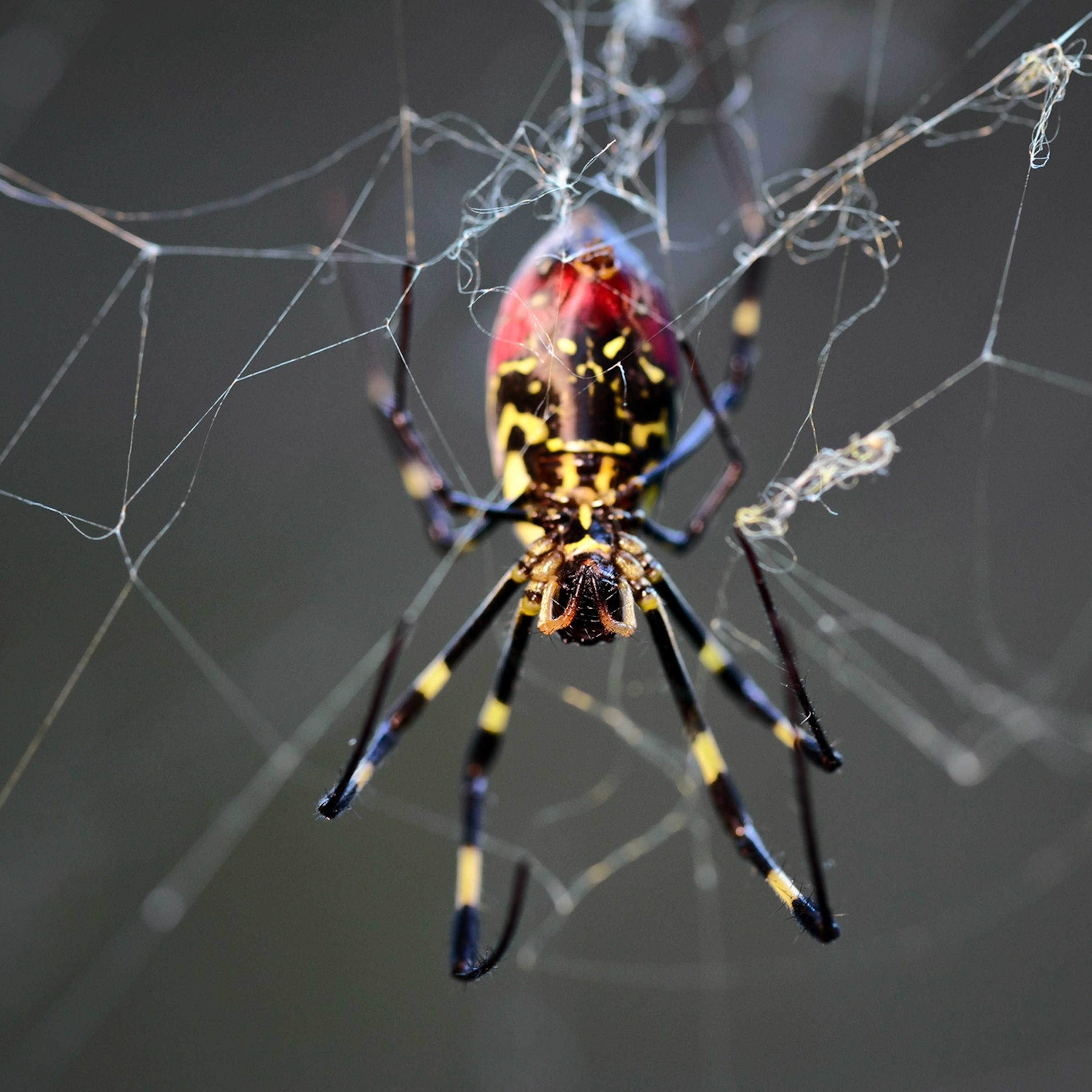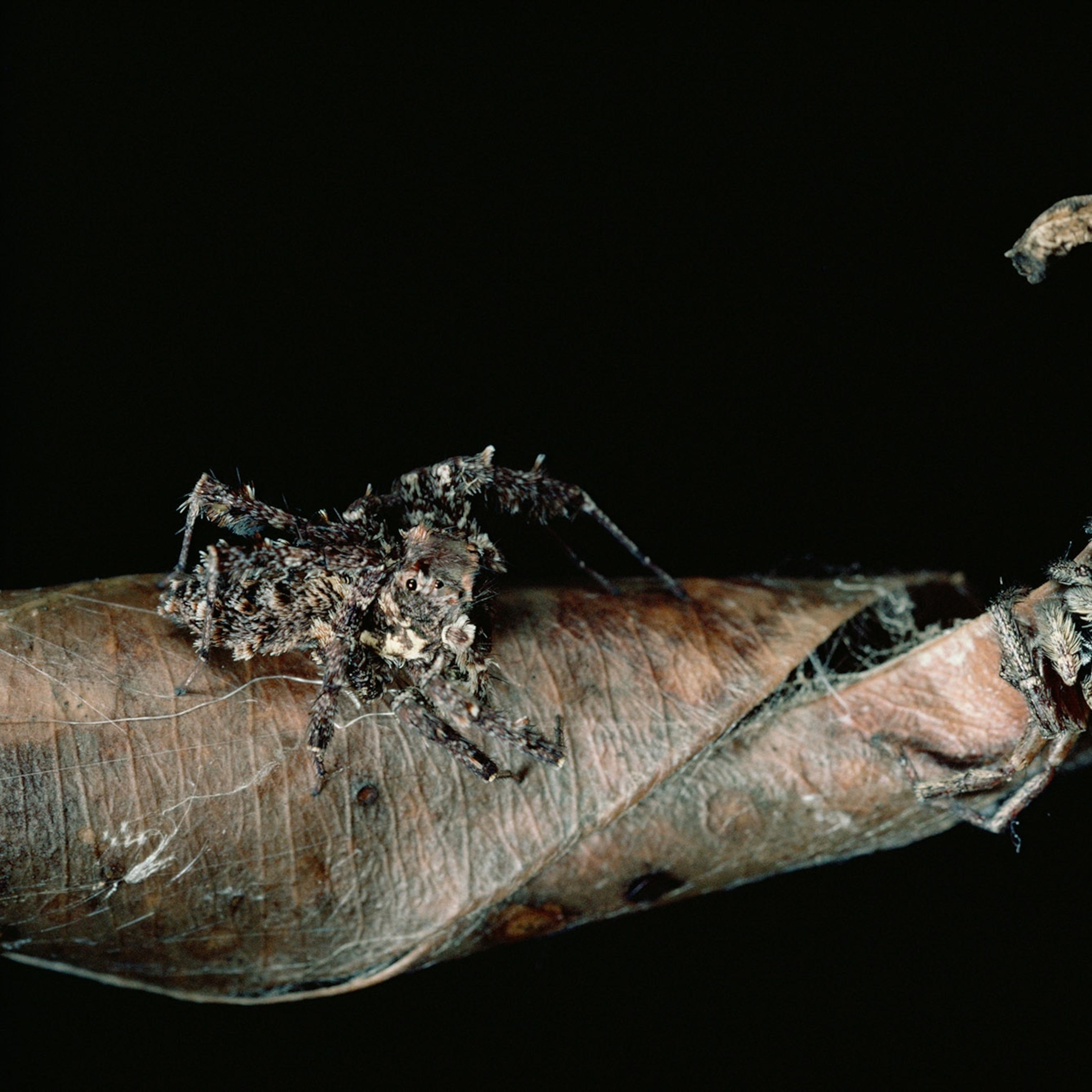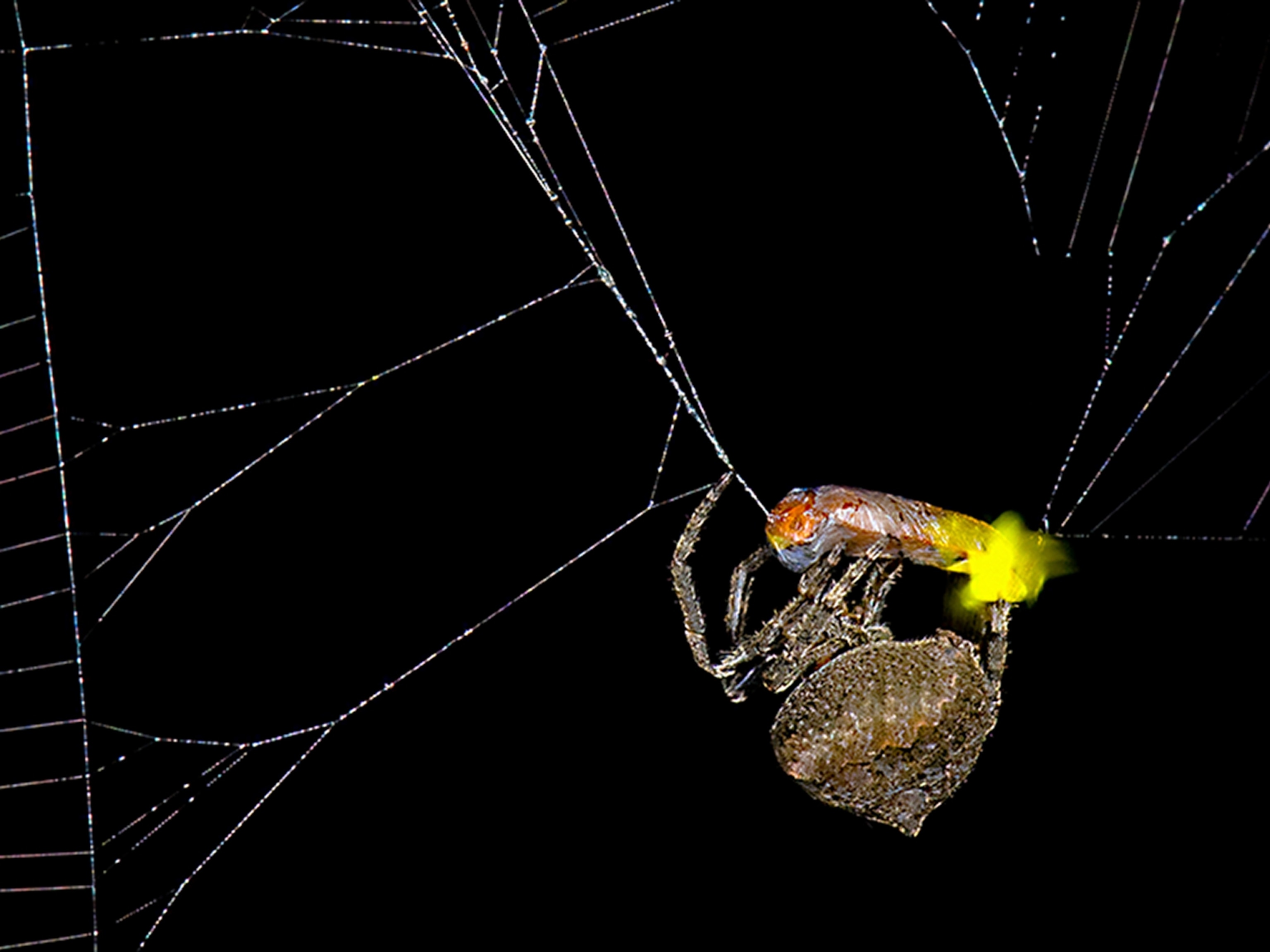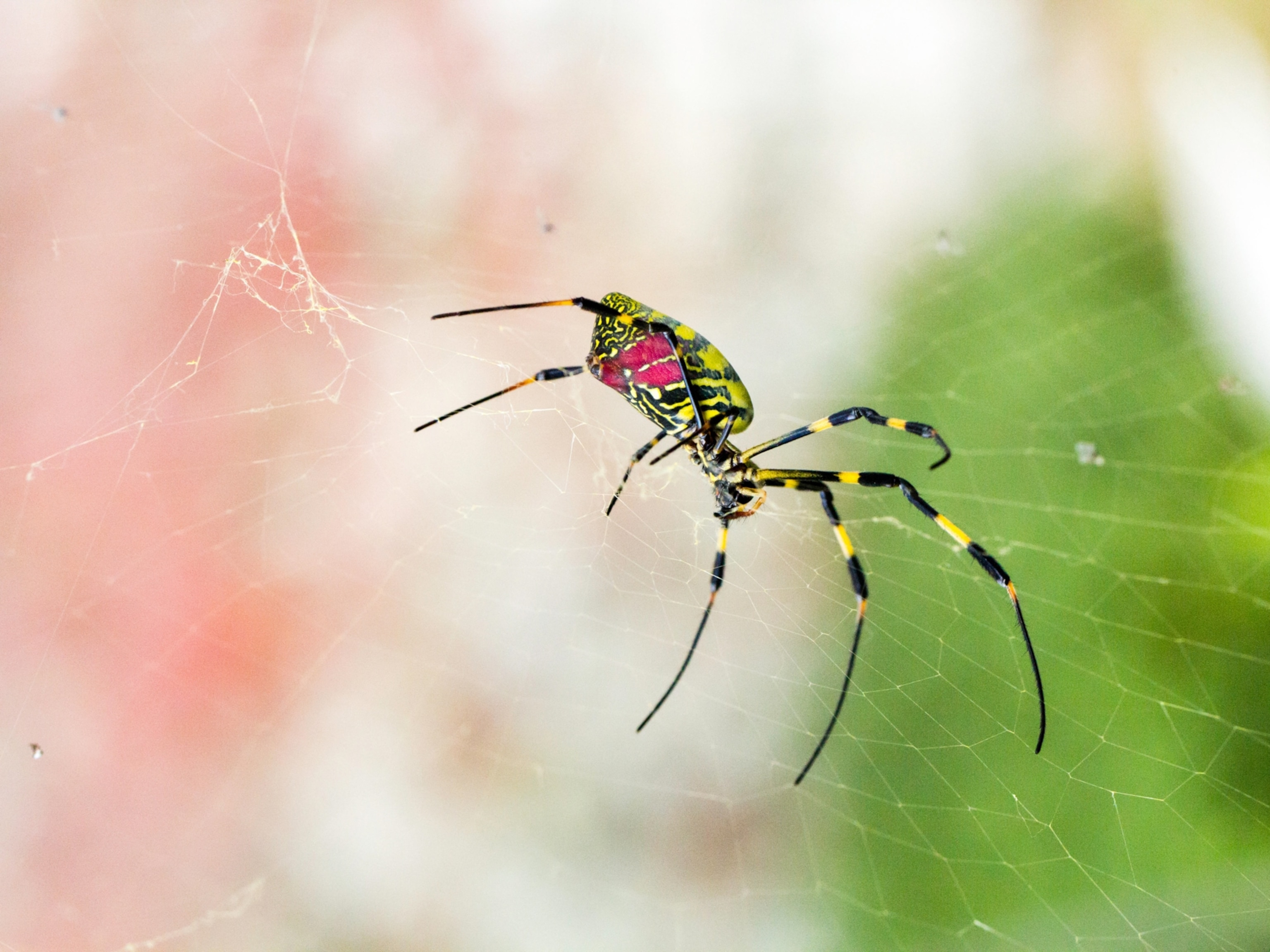Giant, invasive joro spiders spotted in the Northeast—but they didn’t fly there
Sightings in Massachusetts and Pennsylvania have arachnophobes buzzing—but experts say these colorful critters likely hitched a ride.

Portrait photographer Joseph Schifferdecker was walking down a street in Cambridge, Massachusetts, in September, scouting for backdrops, when his client pointed out “the biggest spider they’d ever seen.”
Schifferdecker didn’t know it at the time, but it was a joro spider—an arachnid native to Asia that arrived in the U.S. state of Georgia in 2013 as a shipping-container stowaway. The spider has since spread to other southern states, such as the Carolinas, Tennessee, and Oklahoma.
After snapping a few photos, Schifferdecker and a friend searched online and realized there were no other accounts of the colorful species in Massachusetts.
“And then we realized, ‘Oh, this might be the first one.’”
Earlier in September, someone spotted a joro spider outside of Philadelphia, marking the species’ first observation as far north as Pennsylvania.
So have the giant spiders finally flown to the U.S. Northeast, as many misleading headlines have suggested?
Not so fast. These isolated cases are likely hitchhikers, individual spiders that found a comfy spot on or under a vehicle and stayed there, says Andy Davis, a research scientist at the University of Georgia who studies joros. (Read how joro spiders are incredibly shy.)
“If you look at the very first sightings of joros back in 2013, they were along interstates,” says Davis. “So we’re pretty sure that these things are traveling now by way of humans.”
He's even seen it firsthand. “I was driving down the highway in my truck, and I just happened to look over to the passenger side mirror, and I saw a joro spider hanging off of it,” he says. “And I was going highway-speed, like 50 to 60 miles per hour.”
No flying spiders
Myths abound about these yellow-and-black arachnids, notably that they’re harmful to people.
“It seems like I’m constantly having to tell people, ‘Don’t worry. They’re not going to kill you. They’re not coming for your pets,’” says Davis.
Some news outlets have claimed joros can parachute through the sky, but this is only true of spiderlings, which weigh almost nothing.
Baby spiders perform a common behavior called ballooning, in which they use a fine line of silk to harness the wind and travel several miles through the air.
“But even with the ballooning behavior, they can’t travel thousands of miles,” says Davis. “It’s more like dozens of miles, if that.” (Read more: “Are 'giant, flying' joro spiders really taking over the U.S.?”)
That’s why hitchhiking spiders will likely outpace the species' natural expansion to other states, which can take decades, according to Penn State. It would take joro spiders 35 years to reach southeastern Pennsylvania on their own, according to the university.
Meanwhile, “these sightings are going to keep happening,” he adds. That's why Davis and colleagues have set up Joro Watch, a website where people can report sightings of the spider.
Cold-weather survivors
It’s unknown how many joros are in Boston and Philly, and whether these individual spiders—or any potential eggs—will make it through the winter.
“It’s going to be up to a bit of luck,” says Sebastian Alejandro Echeverri, author of Spiders of the United States & Canada.
Joro spider adults die after mating, leaving behind an egg sac that can withstand the cold weather. In the spring, spiderlings hatch and begin the life cycle anew.
While joro spiders were first introduced to the American South, and they have thrived there, researchers believe the northern parts of the United States are better habitats for the species.
In fact, a study published in 2023 in the journal Ecology and Evolution used several different kinds of habitat modeling to show that joros could survive well north of the border with Canada. (Get the facts straight on some spider myths.)
In general, Echeverri says arachnids have evolved a variety of survival strategies.
“Some spiders over-winter as adults,” he says, noting that leaf litter or the crevices beneath rocks are good places to wait out the cold. “Some hatch later in the year and over-winter while they are smaller.”
What if you see a joro spider?
Despite being essentially harmless to humans, joro spiders are considered to be an invasive species: Some early studies have found joros reduce native spider populations.
For this reason, no one should be willingly moving these spiders to new locations.
And though some might be tempted to stomp them, as is common with spotted lanternflies, Echeverri has another idea—learn to appreciate these beauties, which can build impressively giant, super-strong webs.
“If you see a joro spider, take a photo of it, and put it on a iNaturalist so that scientists know where these animals are being seen,” he says.
“If you're worried about them in your yard or in your space, you can use a cup and piece of paper to just move them elsewhere.”
Schifferdecker agrees.
“It’s important to just be present and open-minded,” says the photographer, reflecting on his encounter. “That one quick photo-snap… if I hadn’t taken that, they probably wouldn’t know about it still.”








